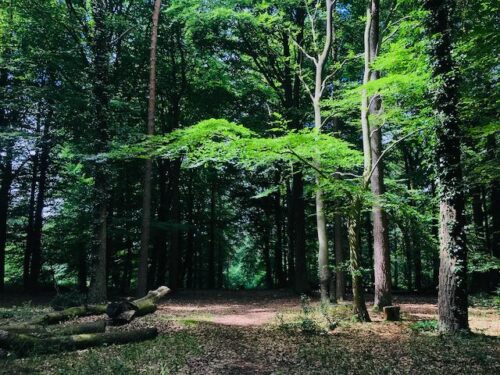A rich history and the roots of the woodland today:
Hazel Hill is part of a large ancient forest which existed in the 14th century, and probably long before. In the 14th and 15th centuries, this whole area was part of the royal hunting forest of Clarendon Palace, whose ruins are 2 miles north-west of Hazel Hill.
Even now, a map will show you that the area around Hazel Hill Wood remains heavily wooded, and includes two large woodland nature reserves: Bentley Wood and Nightwood Copse.
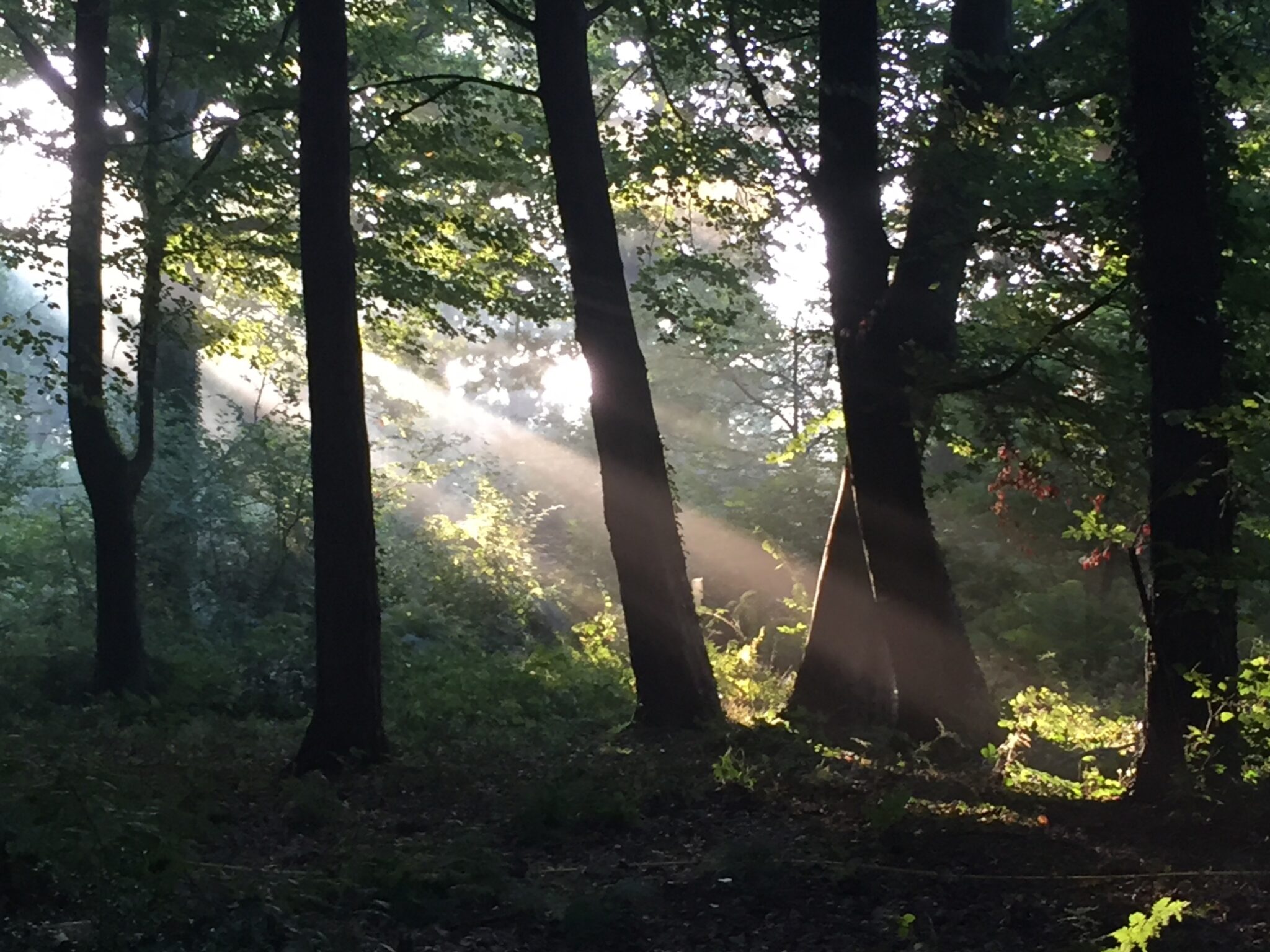
In the 1930’s, most of Hazel Hill Wood was clear-felled and replanted: we don’t know why. It was replanted with a wide variety of species in different compartments, including oak, beech, hornbeam, and conifers. There was an intricate network of small paths and bigger rides, so it may have been set up for shooting. We do know that this has contributed to the diverse ecosystem that still exists today, and a variety that’s fairly rare in a woodland of this size.
The ‘rides’ in the wood are named for the fact that they were designed for riders on horseback. Now, they provide a perfect environment for butterflies and glowworms, as well as open ground for bats who will use these spaces for easy open flight to feast on flying insects at night.
In the 1970s, with tax incentives for forestry, a pension company bought Hazel Hill wood as part of a parcel of five woods in the area, called the Walden Woods. In the 1970s and 1980s, the wood was managed on purely commercial lines, with a focus on conifer plantations, and no attention to wildlife or conservation.
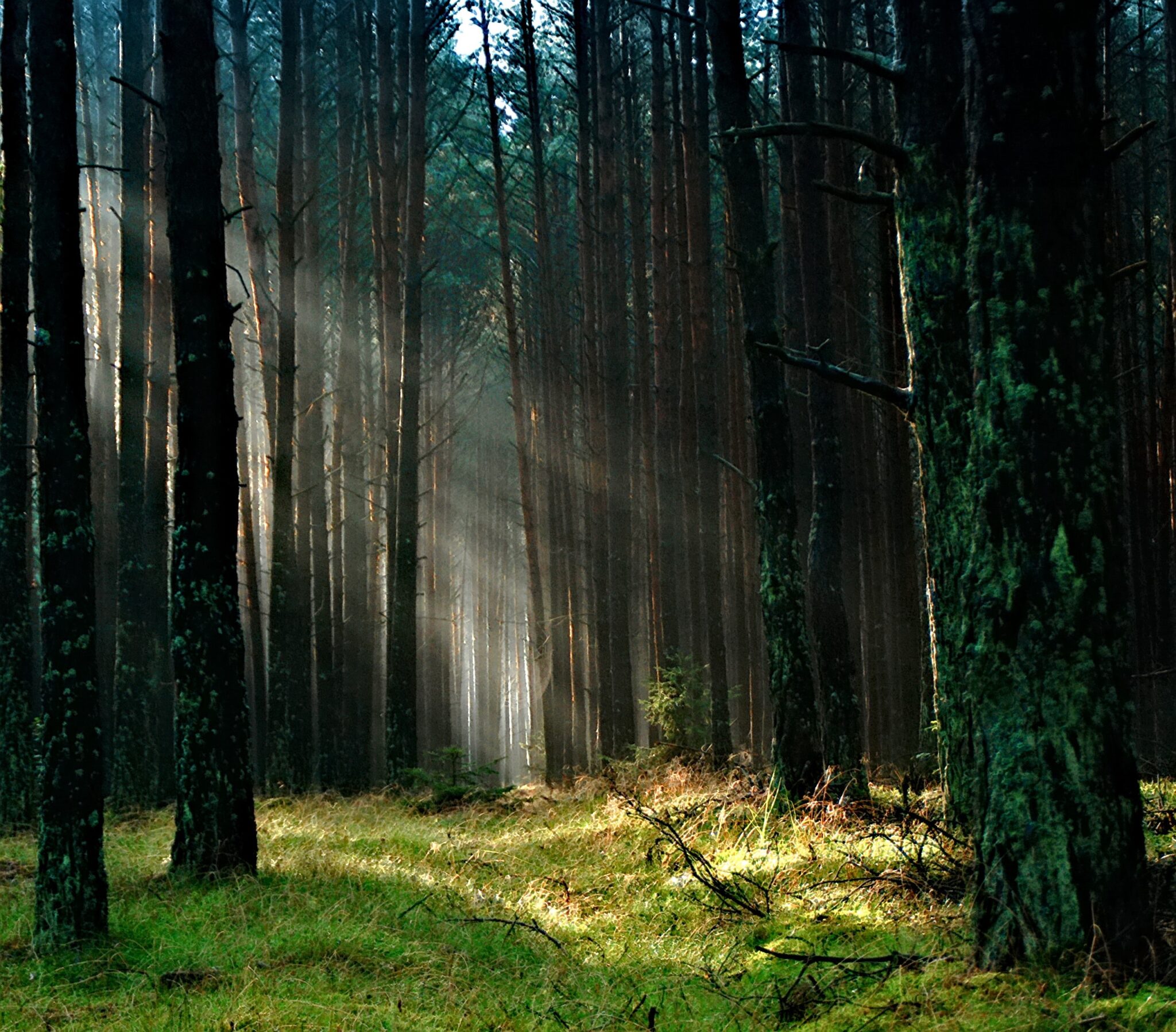
In 1987, our Founder, Alan Heeks, purchased the wood. At this point, it was pretty sterile. It had been owned by the pension fund and run by a mainstream forestry management company. As their annual fee was modest, Alan kept working with them for his first few years owning the wood. He began to realise, though, that they made their money by commission on activity: felling, planting, etc, and that their methods and activities didn’t sit well with him.
By 1990, the wood looked desolate. Nearly 20 acres of mature conifers had been clear-felled, and the managers were proposing… new conifer plantations. At this point, something in Alan rebelled, perhaps the voice of the wood. Alan also met Robin Walter, who was shifting his vocation from tree surgery to sustainable forestry. He introduced ideas like Continuous Cover Forestry, where you aim for a mix of age and species, and you never clear-fell.
From 1990, Alan was also involved in a separate project to set up an organic farm from scratch as an education centre. That experience, plus working with Robin, taught him co-creativity. As Alan would put it, “The patient dance between human intentions and the realities of the ecosystem. You can’t abdicate, but nor can you impose your wishes, and intense observation in best permaculture mode is crucial.”
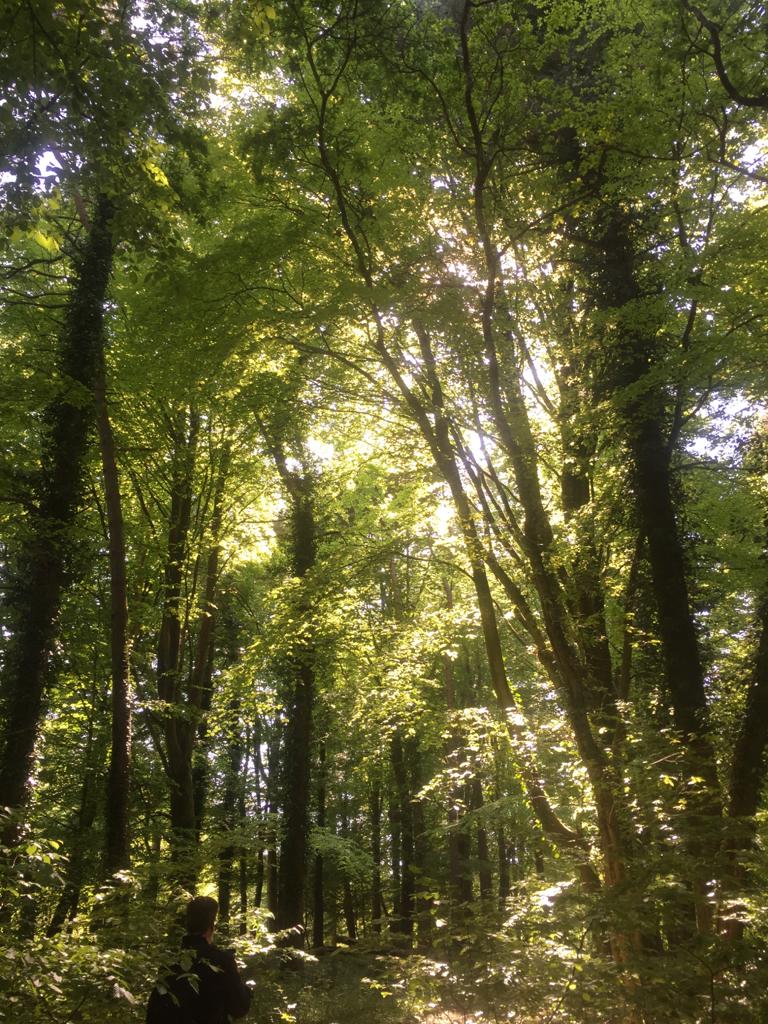
At Hazel Hill, being co-creative meant continued observation, debate, curiosity and asking questions. What was actually thriving or struggling? Where should humans intervene? How could we use or steer Nature’s inclinations? For example, birch grows incredibly successfully in the wood. Alan’s team thinned it out around some of their expensive hardwood planting in tubes and let it take over elsewhere.
Alan and Robin continued to learn and explore. In 1994, they held a permaculture design workshop with Patrick Whitefield. Threats like climate change and tree diseases were already on the horizon, so their key conclusion was to maximise the diversity of the tree species and habitats, to raise our resilience to unpredictable pressures.
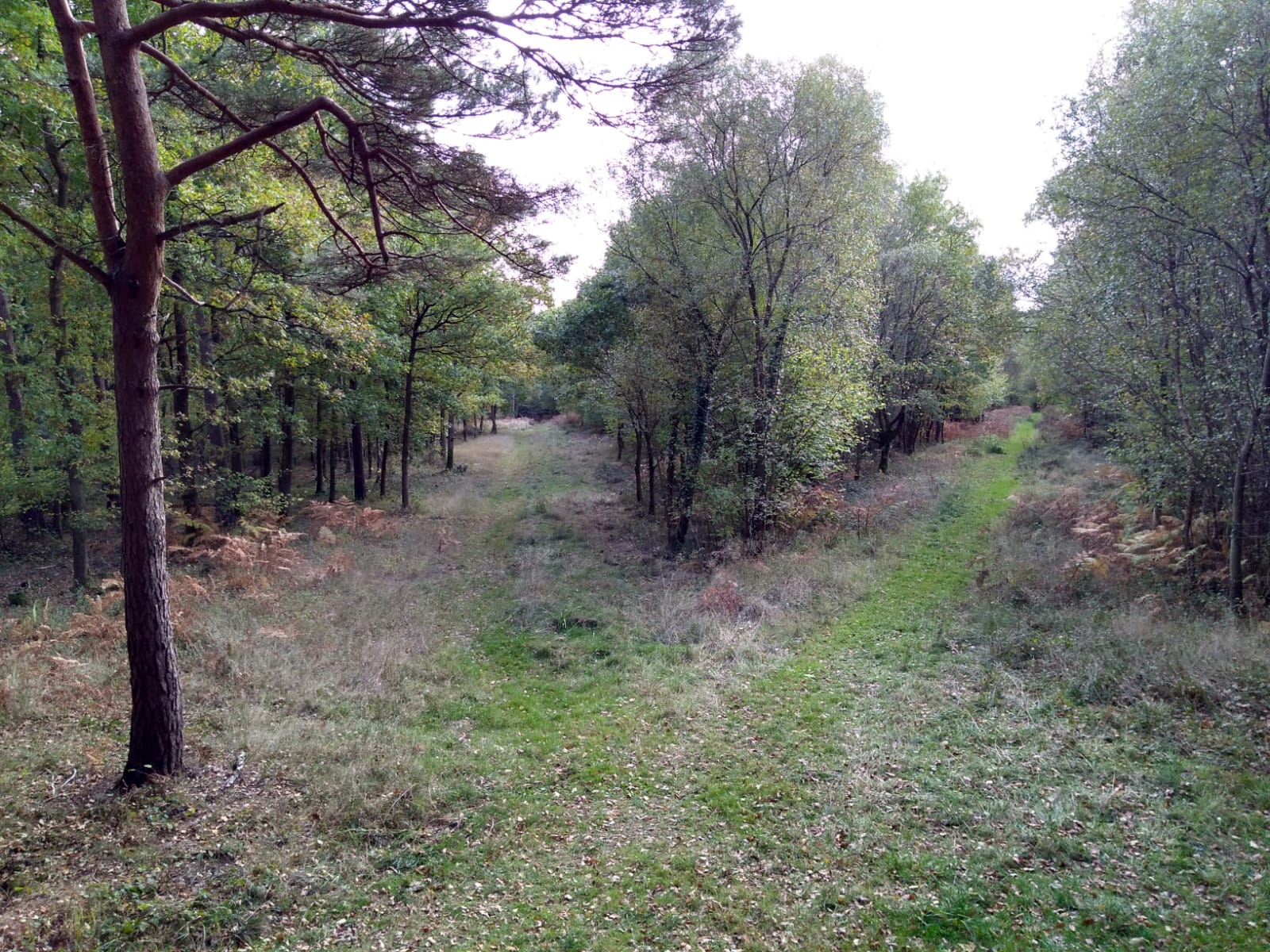
Expanding habitats took several forms. Many rides have been greatly widened, changing from tunnels between trees to rich areas of ground flora. A large pond has been created, and open glade areas. Much of this work has been done by conservation volunteers, and volunteers are hugely important at Hazel Hill to this day.
The ecosystems within the wood (and the Wildflower meadow! A later addition) are now thriving, diverse, and resilient. There have been large increases since 1987 in the numbers and variety of birds, wildflowers, fungi and lots more. We have rare butterflies, bats and birds, such as the Barbastelle bat, over 80 species of moth, and many ancient woodland indicator plants.
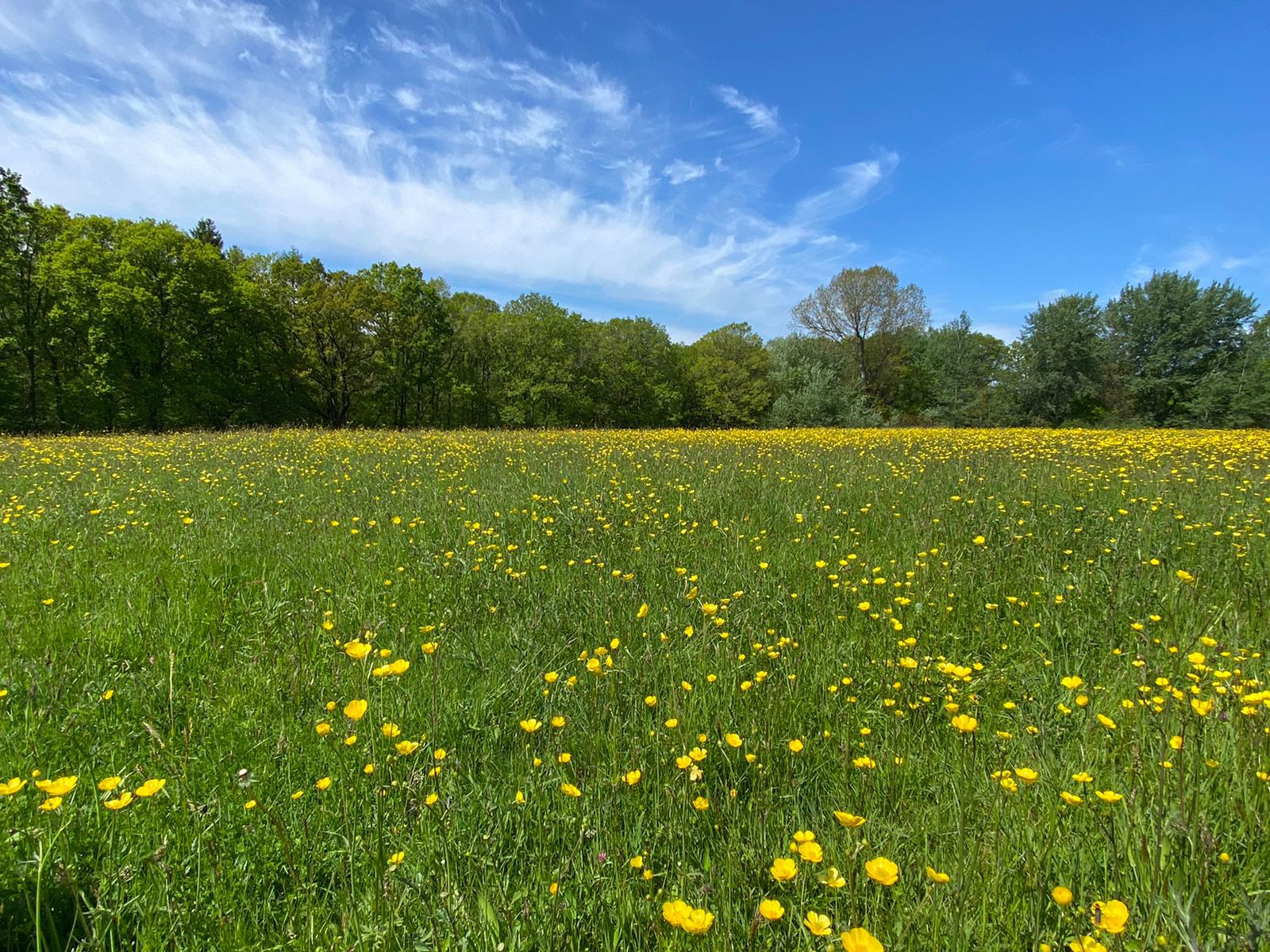
By 2013, Alan felt a call to set up a review gathering to look back over 20 years of human groups at the wood, and consider aims for the next 20 years. A couple of significant intentions emerged from this review. One was to shift the ownership of the wood from Alan personally to a registered charity. The other was to open the wood to a wider variety and larger number of human groups, such as school groups, young carers and others. We recognised that by 2014, the wood in its current use had ‘come of age’. With 21 years’ experience of groups, we believed the wood was able to accept this change, provided we also intensified our stewardship and care.
2015: Hazel Hill Wood is held in trust:
In June 2015, Hazel Hill Trust began operating, with the main aim of promoting contact with nature, especially programmes at Hazel Hill Wood. We are continuing to learn and innovate around ways that time in the wood can help a great variety of human needs.
The increasing number of human visitors brings benefits to the forest: not only more conservation work, but also creates good conditions for those butterflies whose favourite habitat is recently trampled grass! Scything and thinning of brambles and bracken are also beneficial human activities that help the wood. In return, the wood helps the people who come here in so many ways.

To this day, we’re always walking the line of inviting people to connect with the wood and reconnect themselves to nature, and at the same time respecting the wood and the wildlife within. We hope that by bringing people into a closed, private woodland sanctuary in a respectful way, we can share and grow that philosophy of mutual respect and care. The opportunity to sleep in the buildings here means people have even longer to feel and absorb the benefits of time surrounded by a peaceful woodland environment and its abundant wildlife.

